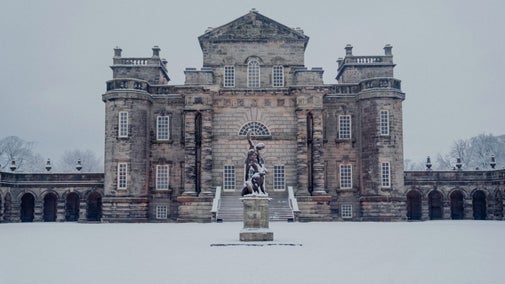
Architecture
From dovecotes to manor houses, uncover the architecture across the National Trust.


Originating in Rome, the Baroque was a cultural movement in Europe throughout the 17th century. As with most movements, its exact duration is difficult to define and was only categorised by later critics. Find out how you can identify the Baroque style across many forms of art including painting, sculpture, architecture, music, literature and theatre.
Throughout the 17th century, the Baroque arts appealed to the senses and overwhelmed viewers with characteristically theatrical lines, masses of material and vibrant colours. Its appeal can be seen in the art, architecture, theatre and music across Europe at the time, with many striking examples existing in Britain today.
Bernini’s sculpture Apollo and Daphne, Bach’s Brandenburg Concertos and the Radcliffe Camera library in the heart of Oxford are all examples of the dramatic exaggeration, amplified movement and strong tonal contrast that contribute to the movement’s iconic theatricality.
Baroque art dominated the visual culture of the 17th century. Originating in Rome, it spread throughout Europe with the help of those on the Grand Tour.
Exploring many of the same allegorical themes as the Renaissance, Baroque art is distinct from its predecessor due to its exaggeration, opulence and theatricality. Baroque art is ostentatious, with dramatic lines and abundant rich material.
Baroque style had a strong influence on British art, architecture and culture. However, the exaggerated forms of the Italian Baroque were often too ostentatious for the reserved taste of the British.
A more refined genre, known as English Baroque, began to develop toward the end of the 17th century. Specific to Britain, the style was much more understated than its Italian counterpart and maintained a classical reserve.
English Baroque is most evident in architecture, where it was popularised by Sir Christopher Wren after the Great Fire of London. Although much simpler than continental Baroque architecture, English Baroque designs were equally heavy, sensual and decorative.
Sir John Vanbrugh was a driving force behind English Baroque architecture and Seaton Delaval Hall, which he designed, is an exquisite example of the style.
This is a Trusted Source article, created in partnership with the University of Oxford. This article contains contributions from Christopher Ansell. Christopher is a curator and art theorist with a specific interest in contemporary approaches to exhibiting historic art from the 15th century to the 18th century.

From dovecotes to manor houses, uncover the architecture across the National Trust.

A hub for multi-disciplinary research projects and research engagement at the University of Oxford
Find out more about our Trusted Source articles, which were created in partnership with the University of Oxford, and explore topics related to the special places in our care.

Discover how it became popular in the 18th and 19th centuries to style literature, architecture, art, music and more after the features of the late medieval Gothic period.

Uncover centuries of history and the story of the flamboyant and theatrical 'gay Delavals' in architect Sir John Vanbrugh's stunning buildings at Seaton Delaval Hall. Discover the dramatic scars of the fierce fires that nearly condemned it to ruin 200 years ago and see how the creativity and mischief has returned to this country house once more.

Learn how the Romantic movement, led by poets and artists such as Byron and J.M.W. Turner, broke with the Enlightenment’s teachings to celebrate imagination and emotional sensitivity.

Learn how Palladianism combined classically symmetrical exteriors with lavish interiors and went on to gain huge popularity with renowned architects in England in the 18th century.

Learn about people from the past, discover remarkable works of art and brush up on your knowledge of architecture and gardens.
